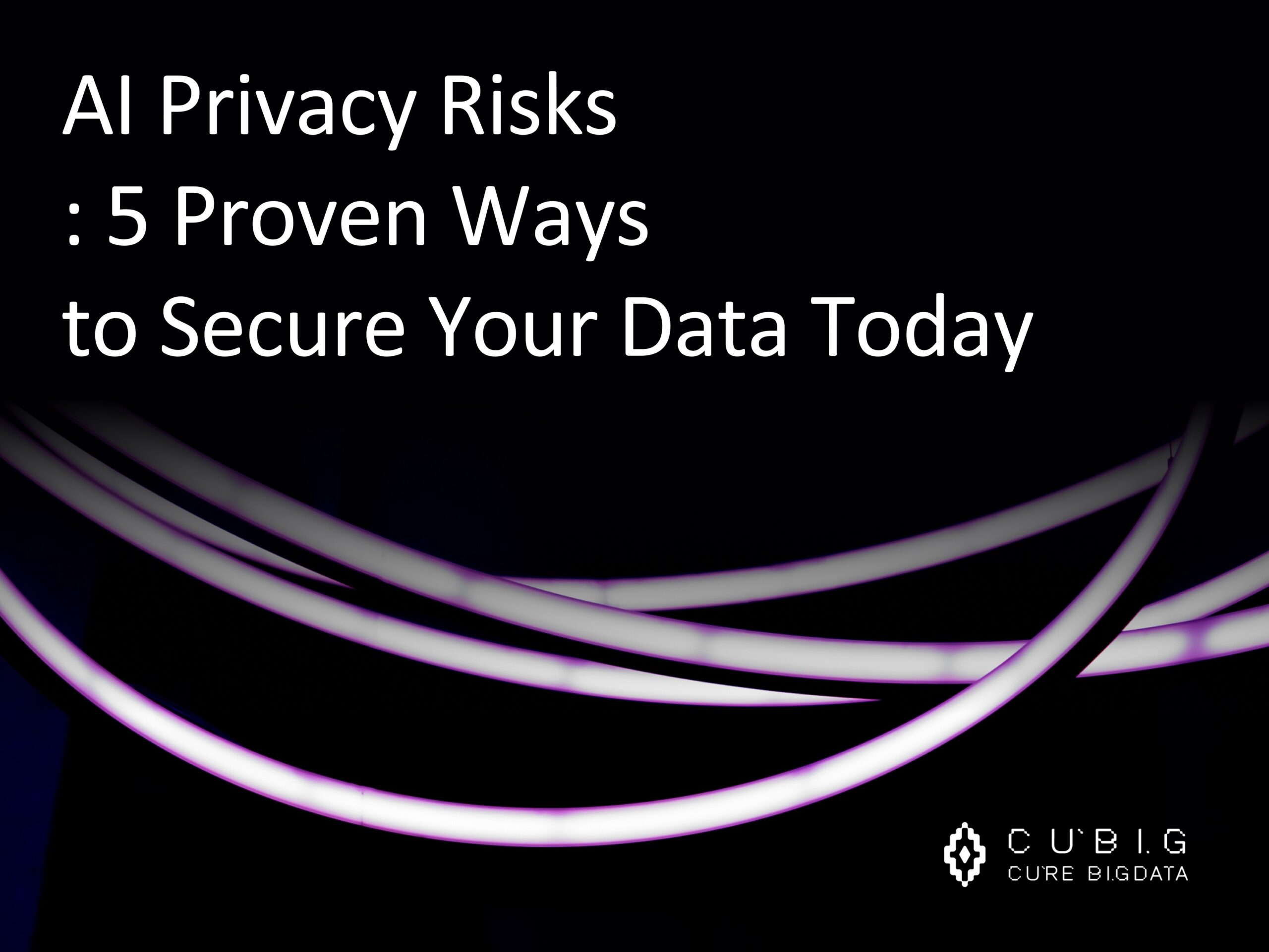AI Privacy Risks: 5 Proven Ways to Secure Your Data Today
Protecting What Matters in the AI Data Era
AI privacy risks continue to evolve as machine learning systems become more data-hungry and complex.
Artificial intelligence (AI) is transforming how organizations operate—automating tasks, predicting customer behavior, and enhancing decision-making.
But as AI systems grow more sophisticated, they require access to more data. This includes sensitive customer information, internal business records, and even behavioral analytics.
As the volume and sensitivity of processed data increase, AI data protection has become a top priority.
Organizations must recognize that data is not just a resource—it’s a responsibility.
While AI drives efficiency and innovation, it also introduces new and complex privacy risks. These risks demand proactive action, not reactive fixes.
This article shares five proven strategies that leading organizations are using to:
- Strengthen data security
- Ensure compliance with evolving regulations
- Build privacy-first, resilient AI systems
Today, privacy compliance and the use of frameworks like federated learning are no longer optional.
They are essential to build AI systems that are secure, transparent, and trustworthy.
As digital ecosystems grow smarter and more connected, data security is now a core business necessity—not just a technical requirement.

Understanding the Urgency of AI Privacy Risks
AI systems rely on large volumes of data—often personal, behavioral, and confidential.
If organizations do not manage this data responsibly, it creates vulnerabilities that can lead to:
- Cyberattacks and data breaches
- Non-compliance with global privacy laws
- Reputational harm and loss of consumer trust
These risks are not theoretical. Data-related incidents can cost millions in fines, lawsuits, and brand damage.
To stay ahead, businesses must adopt a structured, strategic approach to AI privacy—starting with foundational best practices.
Five Proven Strategies to Secure Data in the Age of AI

1. Apply Strong Encryption Standards
Encryption is the first line of defense. Leading experts recommend:
- Using AES and RSA encryption for stored data
- Applying TLS/SSL protocols for data in transit
- Exploring quantum-resistant algorithms for future-proof security
When encryption is properly implemented, even in the event of a breach, stolen data remains unusable.
This is critical for protecting both customer trust and regulatory compliance.
2. Leverage AI-Powered Security Tools
Traditional security tools often struggle to keep up with the speed and complexity of AI environments.
AI-powered tools, however, provide faster detection and automated responses.
Key features include:
- Anomaly detection for unusual user behavior
- Real-time threat intelligence
- Automated incident response to contain risks quickly
These tools not only reduce response time but also help organizations proactively manage evolving threats.
3. Ensure Regulatory Compliance at All Levels
Privacy regulations are becoming more rigorous worldwide. Failure to comply can lead to heavy fines and loss of business.
Organizations should:
- Adhere to GDPR, CCPA, and other regional laws
- Implement processes for user consent, data retention, and erasure
- Conduct regular audits and employee training
Compliance helps businesses avoid legal trouble and build stronger relationships with customers through transparency.
4. Adopt Federated Learning to Minimize Data Exposure
Federated learning is a privacy-preserving technique that trains AI models locally on devices, without moving raw data to a central server.
Advantages include:
- Reducing the chance of data leakage
- Enabling data minimization and privacy by design
- Offering scalable machine learning
- Already in use by industry leaders like Google and Apple
This method is ideal for organizations that value both performance and privacy.
Explore how federated learning enhances data privacy in collaborative AI systems.
5. Regularly Update Security Policies
Cyber threats evolve constantly. Outdated security policies quickly become ineffective.
Best practices include:
- Frequently reviewing and updating security protocols
- Training teams to detect phishing and other attacks
- Establishing a tested incident response plan
Regular updates ensure that your organization stays protected against both known and emerging threats.

Conclusion
To remain competitive and compliant, organizations must proactively address AI privacy risks across all levels.
While AI holds the power to transform businesses, that potential can only be realized when privacy and trust are protected.
By adopting strategies such as encryption, AI security tools, and federated learning, organizations can mitigate risks and build smarter, more secure systems.
Now is the time to act.
Secure your data before AI privacy threats undermine your credibility.
Discover 5 proven strategies to reduce AI privacy risks and secure sensitive data.
 Key Takeaways
Key Takeaways
- Data protection is critical for long-term AI success
- Compliance isn’t optional—it’s strategic
- Secure AI builds customer trust
- Proactive security reduces long-term risk
- Federated learning supports ethical AI
- AI security tools offer real-time defense
- Privacy is power in the AI era

 Data Market
Data Market
